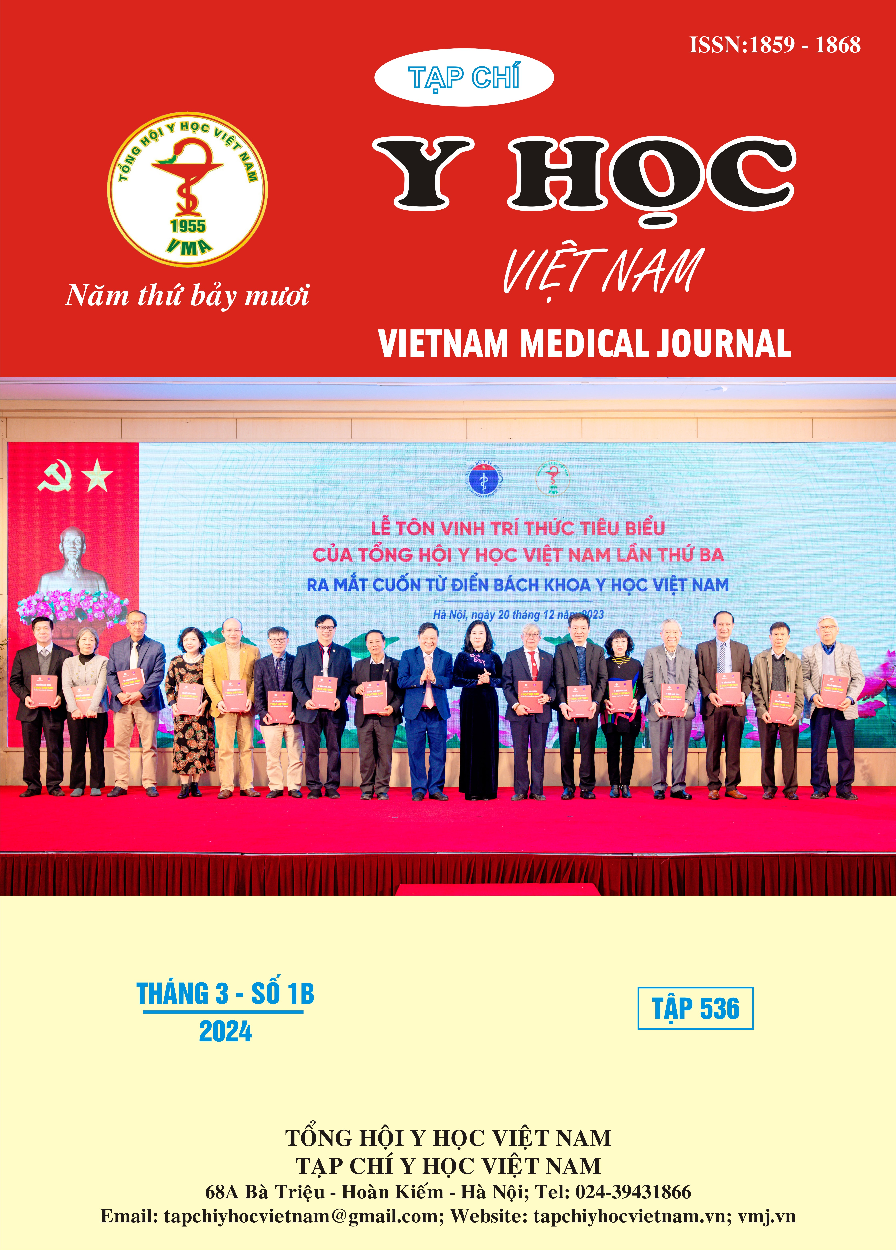COMPARE CLINICAL EFFICACY OF SILK AND POLYPROPYLENE SUTURE AFTER SURGICAL REMOVAL OF IMPACTED MANDIBULAR THIRD MOLAR
Main Article Content
Abstract
Objective: To compare soft tissue healing, suture slack and suture removal pain between two groups silk and polypropylene after surgical removal of impacted mandibular third molar. Method: A randomized clinical trial comparing two groups with a split-mouth design was performed. Total number of 38 patients undergoing surgical extraction of two symmetrically impacted third molars with similar difficulty were involved in the study. Patients were assigned to two groups and determine the type of silk or polypropylene suture used on each side. Soft tissue healing was scored at 3rd and 7th day postoperatively. Suture slack and removal pain were recorded on the 7th day postoperatively. Results: The polypropylene group had higher soft tissue healing score than silk group on both 3rd and 7th day postoperatively. At 3rd day, the soft tissue healing score in the polypropylene group (6.32 ± 1.32) was higher than the silk suture group (5.68 ± 0.70), p=0.029. At 7th day, the soft tissue healing score in the polypropylene group (6.42 ± 1.11) was higher than the silk group (5.97 ± 0.64), p=0.029. Compared to the silk, the polypropylene had less slack (0.51 ± 0.60 mm vs 2.70 ± 0.69 mm, p<0.001) and lower suture removal pain (3.58 ± 4.25 vs. 8.29 ± 8.00, p=0.003). Conclusion: Compared to using silk, polypropylene helped soft tissue heal better, reduced suture slack and removal pain after surgical removal of impacted mandibular third molar.
Article Details
References
2. Miroslav Dragovic, Marko Pejovic, Jelena Stepic, et al. Comparison of four different suture materials in respect to oral wound healing, microbial colonization, tissue reaction and clinical features - randomized clinical study. Clinical Oral Investigations. 2020;24(4):1527-1541.
3. Miroslav Dragovic, Marko Pejovic, Jelena Stepic, et al. Microbial adherence affinity and clinical characteristics of polypropylene versus silk sutures in oral surgery. Srpski arhiv za celokupno lekarstvo. 2018;146(5-6):258-263.
4. Olivia Pons-Vicente, Lidia López-Jiménez, María Angels Sánchez-Garcés, Sergi Sala-Pérez, Gay-Escoda C. A comparative study between two different suture materials in oral implantology. Clinical Oral Implants Research. 2011;22(3):282-288.
5. Ran Asher, Tali Chacartchi, Moshik Tandlich, Lior Shapira, David Polak. Microbial accumulation on different suture materials following oral surgery: a randomized controlled study. Clinical Oral Investigations. 2019;23(2):559-565.
6. Rino Burkhardt, Niklaus P. Lang. Influence of suturing on wound healing. Periodontology 2000. 2015;68(1):270-281.
7. Yafit Hamzani, Gavriel Chaushu. Evaluation of early wound healing scales/indexes in oral surgery: A literature review. Clinical Implant Dentistry and Related Research. 2018;20(6):1030-1035.
8. Yaman D, Paksoy T, Ustaoğlu G, Demirci M. Evaluation of bacterial colonization and clinical properties of different suture materials in dentoalveoler surgery. Journal of Oral and Maxillofacial Surgery. 2022;80(2):313-326.


